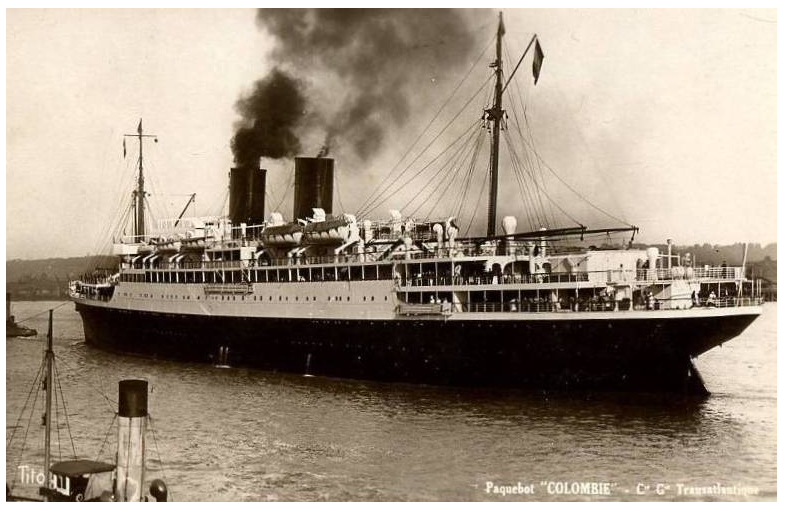
Darrell C Hill, known as DC, was born in High Point, North Carolina on July 31, 1923. He was the middle child of eleven children born to Numa Hill and Minnie Rook. Somewhere between DC’s 6th and 10th birthday, his family moved to Tomlinson street. This could be how he met his future wife, Ruth Beane. While Ruth was born in High Point, her family had moved to Martinsville, VA when she was young. Both of Ruth’s parents had family in High Point and they would return to visit. Ruth’s grandmother, Ada Beane, lived on Grimes street, which intersects with Tomlinson street. DC worked at a local Hutchens National Food stores grocery store.
On September 16, 1940, President Roosevelt signed the Selective Training and Service act, which required all males aged 21 through 36 to register for the draft. DC enlisted in the Army four days later, about six weeks after his 17th birthday. He was assigned to Company F of the 121st Infantry, The Gray Bonnet Regiment. Both of DC’s older brothers also served in the war. His oldest brother, Dallas, joined the Army in 1943 and Numa joined the Navy in 1942.


In the early 1940s, the Army conducted large scale combat simulations in various locations in the United States. The 121st Infantry started with the Tennessee maneuvers in June 1941. In July 1941, they were participating in the Carolina maneuvers. The 121st infantry was reassigned from the 3rd Infantry Division to the 8th Infantry Division in November 1941. In September 1942, the 121st infantry was back in Tennessee for another maneuver, which lasted until November. At the end of the manuever, they were moved to Camp Forrest for three weeks, then moved to Ford Leonard Wood, Mo. March 1943 saw the unit heading for desert training in Camp Laguna, Arizona, where they trained until August. When desert training was complete, they headed back to Camp Forrest to start preparing for overseas movement. On October 11, 1943, DC and Ruth were in York County, SC, where they were married. On November 25, 1943, the 121st boarded a train for Camp Kilmer, NJ. After a week at Camp Kilmer, they moved to Brooklyn, NY, their port of embarkation.

They departed from Brooklyn on December 5, 1943, headed for Europe. After ten days, including severe winter storms, on the USS Bienville and SS Columbie, they arrived in Belfast Harbor. The battalions went to different locations in Ireland, spread across roughly thirty square miles. DC was stationed at Ashebrooke-Colebrooke, property of Sir Basil Brooke. Their training continued while in Ireland, with emphasis on small unit tactics. Scouting and patrolling were frequent, with a third of training being conducted at night. Every two weeks, troops were exchanged with the British 55th division as part of the exchange plan. Around May, the 121st were on the way to Belfast Harbor, ready to go into combat. It was only when they arrived at the harbor that they found out it was a dry run and were sent back. At the end of June, they made the trip to Belfast Harbor again, where they boarded the USS Marine Raven and headed for France. They landed on Utah beach in the early hours of July 4 and proceeded to march 22 miles.
They moved to the area of La Haye du Puits with Ay River as their first objective. This area of the country consisted of small fields separated by hedgerows with sunken roads between hedgerows. The hedgerows were old earthen dikes, generally 3-5 feet thick, 6-9 feet high, with bushes, trees, etc growing on them. At 7:10 on July 8, the 2nd battalion, which DC was part of, moved out. Fourteen minutes later, they encountered enemy resistance. Heavy fighting continued through the day and they were ordered to stop their advance at 00:36, 17 hours later. The order to move forward to attack was given again at 06:00, with counter-attacks halting progress after several hundred yards. As a result of the attack stalling, the assistant division commander, Brigadier General Walker, went to the front to lead company E. As he was leading a platoon through a hedgerow, the enemy opened fire, hitting seven men including General Walker. General Walker died of his wounds several hours later, one of a few US Generals to be killed by enemy fire during WW2. On July 10th, several commanders were relieved when they refused to continue frontal assaults through the hedgerows. Frontal assaults were soon replaced with sidestepping and flanking tactics. The second battalion was placed in reserve on July 10th and attacked at 0600 on July 11th, which is the day DC was killed. The 121st infantry had about 3,300 men. They entered combat on July 8, and by the end of July, there were about 1,300 casualties.

Ruth was notified by the War department on August 21 that her husband had been killed in action. DC was a sergeant and earned a purple heart and bronze star. After the end of the war, DC was brought home on the James E Robinson and re-interred at Floral Garden park in High Point, NC.

Sources and further reading
- http://www.fatherswar.com/8thinfdiv/ A website dedicated to the 8th Infantry Division, including the 121st.
- https://history.army.mil/brochures/normandy/nor-pam.htm Normandy, The U.S. Army Campaigns of World War II
- http://www.fatherswar.com/8thinfdiv/WW2/ww2_121stinf/121_INF_AAR_JULY_1944.pdf 121st Infantry after action reports for July 1944
- http://stonewallspringers.com/8thID_121st.htm CPL Malcolm Prouty, 121st Infantry, photo collection
- http://www.dvrbs.com/ccwd-WW2/WW2-RalphHDunn.htm Camden County, NJ memorial page for Ralph H Dunn
- https://www.scribd.com/document/65105537/WWII-8th-Infantry-Division Combat History of the Eighth Infantry Division in World War II
- https://dmna.ny.gov/historic/veterans/transcriptions/Kelton_Durward_M_Memoir.pdf Memories of World War II, Capt. Durward M. Kelton
- http://www.campforrest.com/ A website dedicated to Camp Forrest, TN, including a section on the Tennessee Maneuvers